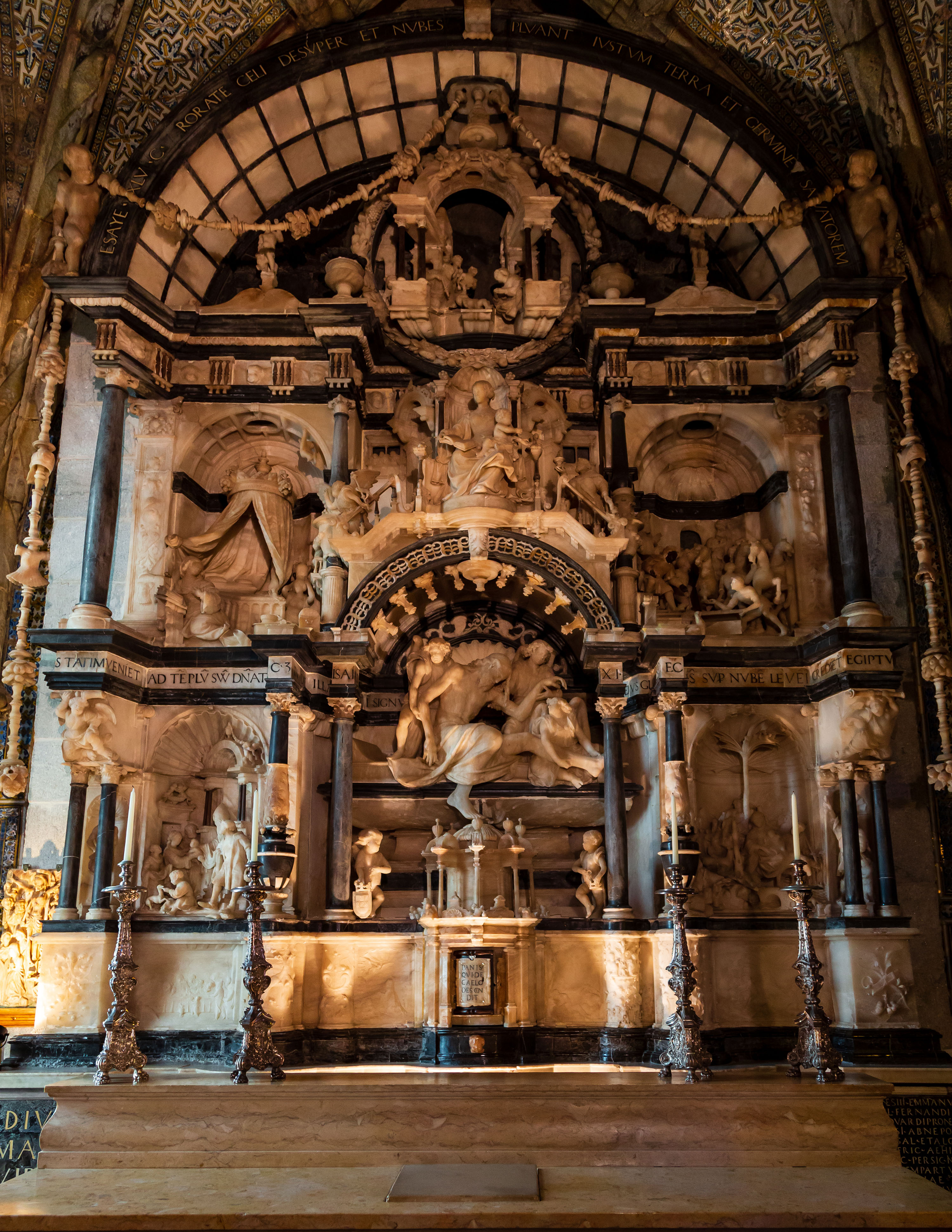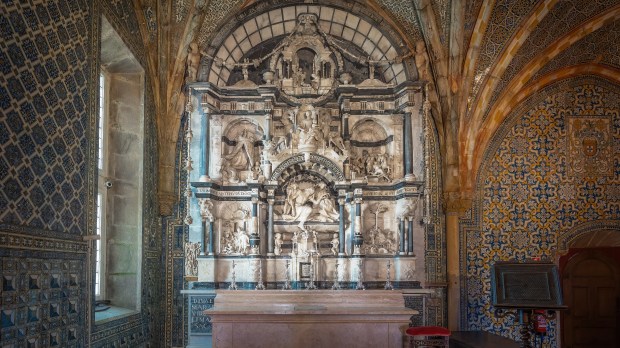The Palace of Sintra is the best-preserved medieval royal residence in all of Portugal. Built during the Moorish Al-Andalus era under Umayyad rule, its construction begun in the 8th century, and was first mentioned and described by the great Andalusian geographer, botanist, and historian of the 11th century, Al-Bakri, in his Book of Highways and Kingdoms.
Conquered in the 12th century by the first King of Portugal, Alfonso I (also known as “Alfonso The Great” or referred to as “El-Bortukali,” “the Portuguese” in Arabic Andalusian literature), almost nothing of the original Moorish building remains. However, the blending of Mudéjar, Moorish, and Gothic styles is quite evident, and surely common in most medieval architecture in Southern Iberia, Portugal not being an exception.
The Chapel of Nossa Senhora da Pena, part of a former convent which operated in the palace, still retains its original 16th-century layout, with room for 22 monks in the choir. In it, a unique altarpiece, sculpted by the remarkable French artist Nicolas Chantereine, seems to represent, at the same time, Jesus’ death and resurrection.

It is not clear if Chantereine got his training as a sculptor in Italy or in France. However, we know that in the first decade of the 16th century (in 1511, according to documents) he was already commissioned with some statues for the Compostela Cathedral in Galicia, and with some other works for the Hospital of the Catholic Kings.
A few years later, in 1517, we find him working for the first time in Portugal, being the master contractor of the western portal of the Monastery of the Hieronymite Monks in Belem. He would never leave Portugal, dying in Évora in 1551.
Chantereine moved to Lisbon in 1527, summoned by King Joao III. There, he was commissioned with the main altarpiece for the Chapel of Nossa Senhora da Pena, in the Palace of Sintra.
This altarpiece, circumscribed by a classic Roman triumphal arch, contains some of the most important scenes from the New Testament featuring the Virgin Mary: the Annunciation, the Nativity, the Presentation at the Temple, the Adoration of the Magi, and the Flight to Egypt. Only the central niche is given over to an image representing, apparently, the death and resurrection of Christ: in it, three angels barely hold Christ’s arms and his left leg with delicate gestures, effortlessly. The position of Christ’s body and head makes it difficult to know if he is about to be laid down in the tomb or if, on the contrary, he is rising from it.
Chantereine’s artistic genius provides with a unique way to solve the conflict: Jesus’ right foot is indeed active, resting on the floor and about to stand up again. This is one of those classic poses we find in most classic sculpture; as in the Greek Discobolus (the “discus thrower”) of Myron, the figure is represented in either the maximum or the minimum movement of muscular tension, right before a decisive action occurs. This image, on the altarpiece, is one of the very few images that might be said to be representing the Resurrection as it is happening inside the tomb.

